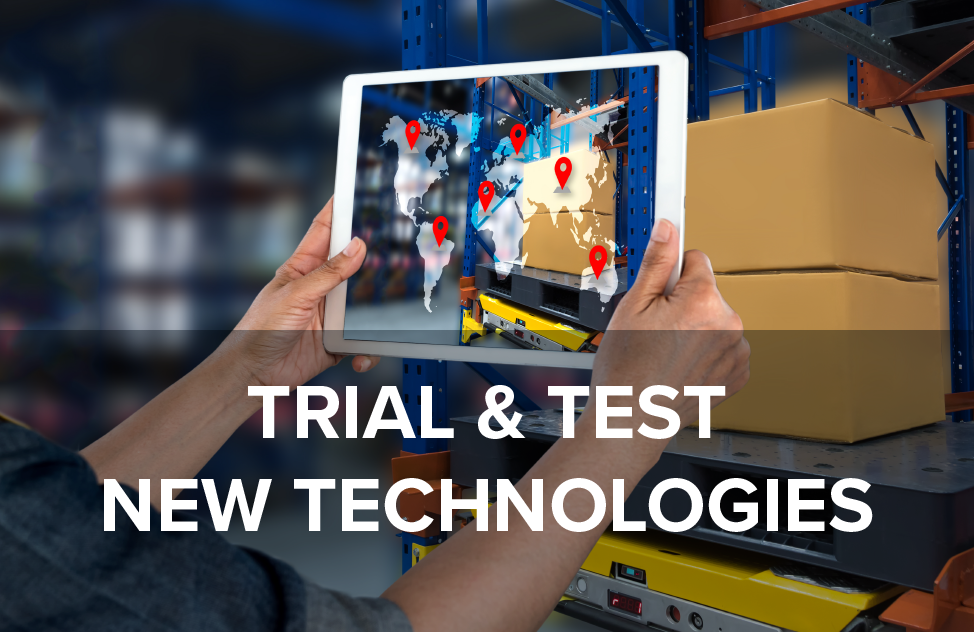
Not long ago, manufacturers were primarily tasked with shipping cases or pallets to a distributor or retailer, which made for a fairly straight forward process. Now, in addition to servicing traditional market channels, many companies are also shipping direct to consumers’ homes. The migration to becoming a true omnichannel shipper can be complex and expensive. With e-commerce often comes picking and shipping individual units of product instead of cases or pallets. In addition, consumer demands have increased exponentially in recent years. Many customers now expect their product to be delivered within a day or two (or perhaps within hours) of the order being placed. They also want to have visibility to their order from the time it is placed until it is delivered at their doorstep. These requirements place significant demands on shippers in terms of labor planning and systems capabilities.
A company’s supply chain has gone from being a cost of doing business to a source of competitive advantage in the marketplace. The expertise of many shippers lies within their ability to manufacture and market their product. Keeping up with ever changing customer demands and the ongoing enhancements in technology to meet these demands has led many companies to partner with a 3PL to proactively address their supply chain challenges.
Not very many years ago most shippers partnered with a 3PL primarily to reduce labor or transportation expense. While those are still keys expectations of 3PLs, forward-thinking companies now thoroughly vet potential 3PL partners to identify those who invest in innovation and will proactively guide them in continually improving their supply chain to meet ever changing customer requirements.
Below are three ways that 3PLs are helping organizations in a strategic way to improve their logistics performance:
Forward-Thinking Problem Solving
People are starting to think differently about how to solve their problems – realizing potential opportunities beyond Lean Six Sigma, process improvements, efficiency gains, or simply reducing costs. Instead of looking for incremental changes, organizations expect to partner with a 3PL that can help take the business to the next level and differentiate themselves in today’s highly competitive markets.
To drive innovation, regular strategic meetings such as quarterly business reviews now play an essential role in identifying new opportunities and allowing teams to adopt a holistic vision while also assisting in the selection of emerging technologies. Customers should share with their 3PL partners what challenges or opportunities they anticipate in the next 12-24 months so they can work together in developing plans to address them. They should also expect their 3PLs to proactively present new ideas and process improvements. These strategic reviews provide the chance for the shipper and 3PL to collaboratively ideate about what they want the future to look like and how to make it happen.
Trialing and Testing Technologies

It is fair for shippers to expect their 3PLs to stay abreast of emerging technologies or innovative solutions that will help them improve their supply chains. A key agenda item for the strategic business reviews mentioned above should include the 3PL reporting on recent developments within the logistics industry, what innovation or technology they have invested in or implemented with other customers since the last meeting, and potential new solutions that could improve the customer’s supply chain.
For example, Kenco recently worked with a customer to implement a Bluetooth tagging technology that was originally designed to track patients and assets in hospitals to monitor the location of inventory within a warehouse. Adding this solution that was already a success in another industry allowed for the removal of a manual paper-based warehouse management system and eliminated the need for cycle counting or physical inventory counts, which led to significant reductions in labor expense, while also improving shipment accuracy.
Simply put, if your 3PL is not investing in innovation, they are falling behind.
Making Data-Driven Decisions
Data is powerful, if you have the ability to capture and organize it. Ask your 3PL if they can capture relevant data from warehouse management, payroll, HR, safety and other systems into a central data repository to create dashboards and reports that allow your company to make data driven decisions. Your operations should have key metrics in the areas of safety, quality, delivery (service), productivity, cost, and employee morale. It’s important that information is available and easily accessible to allow you to assess performance in each area.

If you or your 3PL are still using spreadsheets and manual data capture to manage your supply chain, you are likely not reaping the benefits that you should. Robust business intelligence tools will not only organize and report data in ways that help you manage your business effectively but are experimenting with predictive analytics that will allow to proactively address upcoming changes or risks rather than reacting to them.
Remember, whatever is measured and reported will improve. You should expect your 3PL to have tools that will allow you to leverage the power of data to improve your supply chain.
Historically, the decision to partner with a 3PL was primarily based on cost. Because of the transactional nature of cost-based relationships, companies would often change 3PLs when a competitor came along offering a similar service for a lower cost. As the complexity of supply chains has increased exponentially in recent years, forward thinking companies are now seeking strategic partnerships with 3PLs who can help them navigate the maze of ever-changing customer demands while maximizing the efficiency of their supply chain at the same time.
